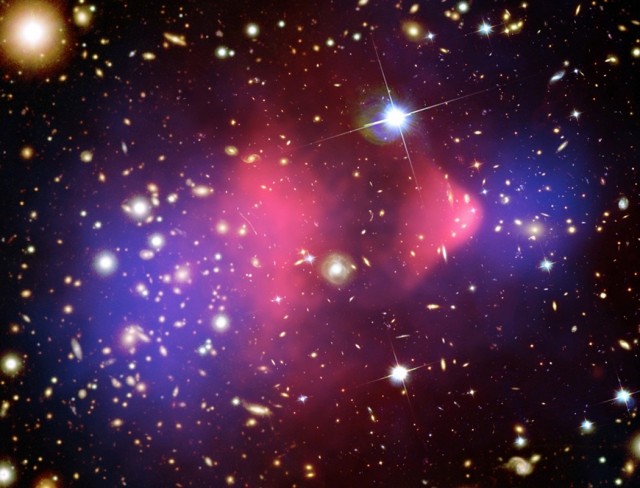Dark matter makes up 80% of the Universe—but where is it all?
Ars Technica » Scientific Method 2014-07-27

It’s in the room with you now. It’s more subtle than the surveillance state, more transparent than air, more pervasive than light. We may not be aware of the dark matter around us (at least without the ingestion of strong hallucinogens), but it’s there nevertheless.
Although we can't see dark matter, we know a bit about how much there is and where it's located. Measurement of the cosmic microwave background shows that 80 percent of the total mass of the Universe is made of dark matter, but this can’t tell us exactly where that matter is distributed. From theoretical considerations, we expect some regions—the cosmic voids—to have little or none of the stuff, while the central regions of galaxies have high density. As with so many things involving dark matter, though, it’s hard to pin down the details.
Unlike ordinary matter, we can’t see where dark matter is by using the light it emits or absorbs. Astronomers can only map dark matter's distribution using its gravitational effects. That’s especially complicated in the denser parts of galaxies, where the chaotic stew of gas, stars, and other forms of ordinary matter can mask or mimic the presence of dark matter. Even in the galactic suburbs or intergalactic space, dark matter’s transparency to all forms of light makes it hard to locate with precision.
Read 30 remaining paragraphs | Comments